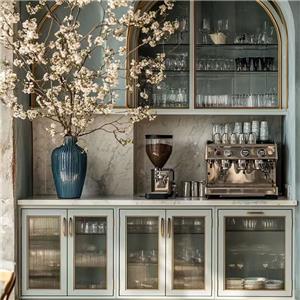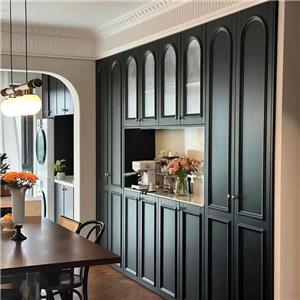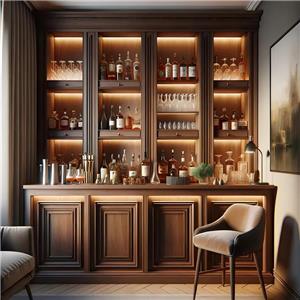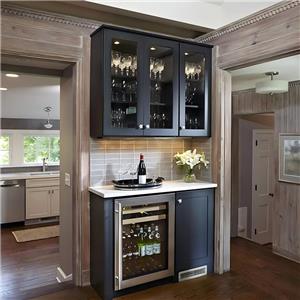Is the bookcase integrated or assembled? Does the bookcase need to be fixed when installed?
Bookcases are one of the indispensable furniture in the home. Whether placed in the living room, study, or bedroom, they bring convenience and order to our lives. However, when choosing and installing bookcases, we often face two key questions: Should the bookcase be integrated or assembled? Does the bookcase need to be fixed when installed?
These issues are not only related to the service life and safety of the bookcase, but also affect the overall aesthetics and practicality of the home environment. This article will explore these two issues in detail from multiple angles to help you make a wise decision.
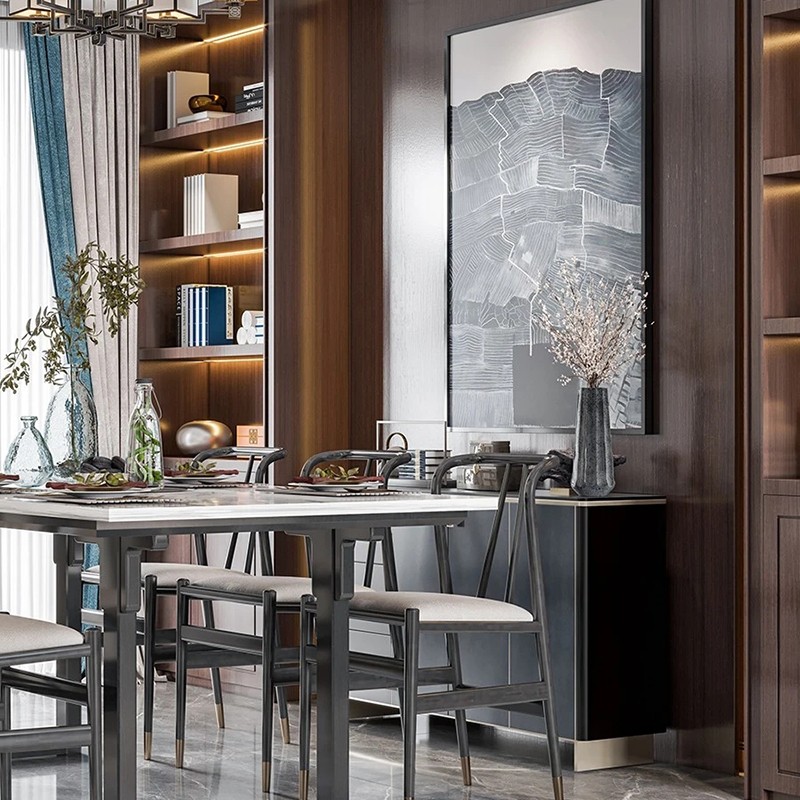
Is the bookcase integrated or assembled?
When choosing a bookcase, it is crucial to understand the different design types. Bookcases usually come in two main forms: integrated bookcases and assembled bookcases. They each have their own advantages and disadvantages and are suitable for different home needs.
1. Integrated bookcases
Integrated bookcases refer to bookcases in which a whole or multiple components are directly connected together. They are usually basically assembled at the factory and only require a small amount of adjustment before use. Integrated bookcases have their unique advantages in overall appearance and stability.
Advantages of integrated bookcases:
● Uniform appearance: integrated bookcases usually have a more refined appearance and a strong sense of integrity, without worrying about gaps or unevenness at the joints. Since they have been precisely processed and polished at the factory, integrated bookcases are often more coordinated with the overall style of the room.
● Strong stability: integrated bookcases usually use thicker materials and sturdy structural designs, with strong overall stability and longer service life.
● Simple installation: Since most integrated bookcases have been assembled before leaving the factory, the installation process is relatively simple, and only basic adjustments or fixations are required.
Disadvantages of integrated bookcases:
● Inconvenient transportation: Since integrated bookcases are usually large in size and heavy in weight, transportation and handling are inconvenient, especially when going up and down stairs or through narrow passages.
● Higher price: The manufacturing process and materials of integrated bookcases are usually high-end, so the price is also higher than that of assembled bookcases, which may not be suitable for consumers with limited budgets.
● Poor flexibility: The size and shape of integrated bookcases are fixed, and it is difficult to adjust according to the specific size and layout of the room. If the size or layout of the room changes, the adaptability of integrated bookcases is poor.
2. Assembled bookcases
Assembled bookcases, as the name implies, refer to bookcases composed of multiple independent components. This type of bookcase needs to be assembled by yourself or by professionals after purchase, which is suitable for consumers who pursue flexibility and economy.
Advantages of assembled bookcases:
● Affordable price: Assembled bookcases are usually more affordable due to their more diverse material selection and relatively simple production process, which is suitable for consumers with limited budgets.
● Convenient transportation: The components of assembled bookcases are usually small and light, which is easy to transport and carry, and can be easily passed even in narrow corridors or elevators.
● Flexible installation: Assembled bookcases allow consumers to choose different components and combinations according to their needs, which can better adapt to the size and layout of the room. In addition, assembled bookcases can be disassembled and reassembled as needed, which is suitable for consumers who move frequently.
Disadvantages of assembled bookcases:
● Poor stability: Since assembled bookcases are composed of multiple components, their stability is usually not as good as integrated bookcases, especially at the joints, they are prone to loosening or deformation.
● Complex installation: The installation process of assembled bookcases usually requires certain skills and patience, especially for complex designs, which may take a long time and effort.
● Ununiform appearance: The components of assembled bookcases may not have a uniform overall appearance due to differences in material or color, affecting the aesthetics.
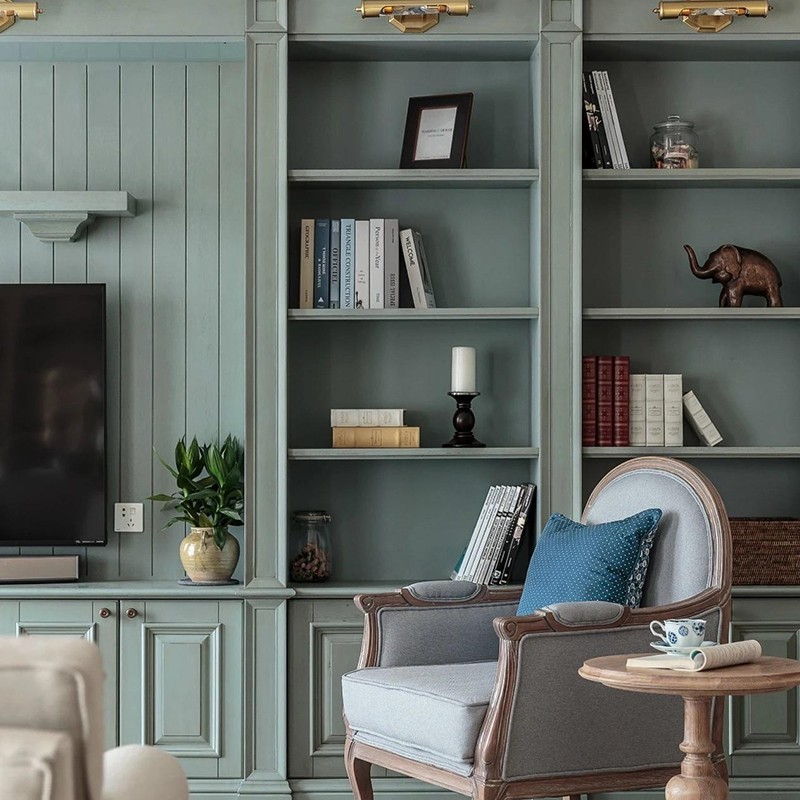
Does the bookcase need to be fixed when installed?
When considering the fixing of the bookcase, we need to analyze it from multiple angles such as safety, stability and aesthetics. Whether choosing an integrated bookcase or an assembled bookcase, the fixing problem is an important part of the installation process.
1. Safety considerations
Safety is the primary consideration for fixing bookcases. Bookcases are usually used to store books, decorations and other items, and they carry a large weight. If the bookcase is not properly fixed, there may be a risk of tipping over, especially in earthquakes or other unexpected situations, which will not only cause property losses, but may even endanger personal safety.
● Anti-tipping measures: In order to prevent the bookcase from tipping over, it is recommended to fix it to the wall when installing the bookcase. The fixing method can use L-shaped brackets, corner brackets or special anti-tipping devices to firmly connect the top of the bookcase to the wall. These fixings are usually hidden on the back of the bookcase and will not affect the appearance of the bookcase.
● Child safety: If there are children in the family, it is particularly important to fix the bookcase. Children are active by nature and like to climb up and down. If the bookcase is not stable, it is easy to tip over. Therefore, it is recommended that families with children must fix the bookcase to the wall to ensure safety.
2. Stability considerations
Stability is an important indicator of whether the bookcase can maintain functionality for a long time in daily use. Fixing the bookcase can not only prevent it from tipping over, but also improve its overall stability and avoid shaking or structural deformation caused by long-term use.
● Center of gravity shift: When the bookcase is filled with books, the center of gravity will shift forward, especially when the bottom of the bookcase is lighter and a large amount of heavy objects are placed on the top, it is more likely to tilt forward. Fixing the bookcase to the wall can effectively prevent this and increase the service life of the bookcase.
● Uneven floor: If the floor is uneven, the bookcase may have a slight shake, which not only affects the use, but may also cause damage to the bookcase structure. By fixing the bookcase to the wall, you can make up for the uneven floor and maintain the stability of the bookcase.
3. Aesthetic considerations
When considering fixing the bookcase, aesthetics is also a factor that cannot be ignored. The location and method of the fixing device will affect the overall appearance of the bookcase, so when choosing the fixing method, you should try to choose those fixing methods that are well concealed and do not damage the beauty of the bookcase.
● Concealed fixing: In modern home design, many fixing devices are designed to be very concealed, such as setting the fixing point on the back or top of the bookcase, which not only ensures the stability of the bookcase, but also does not damage its overall appearance.
● Traceless installation: For those families who do not want to leave marks on the wall, you can choose some traceless installation fixing methods, such as using traceless nails or detachable adhesive fixings. These methods can provide sufficient stability without leaving obvious marks on the wall, which is suitable for families who rent houses or families who often change the layout of furniture.
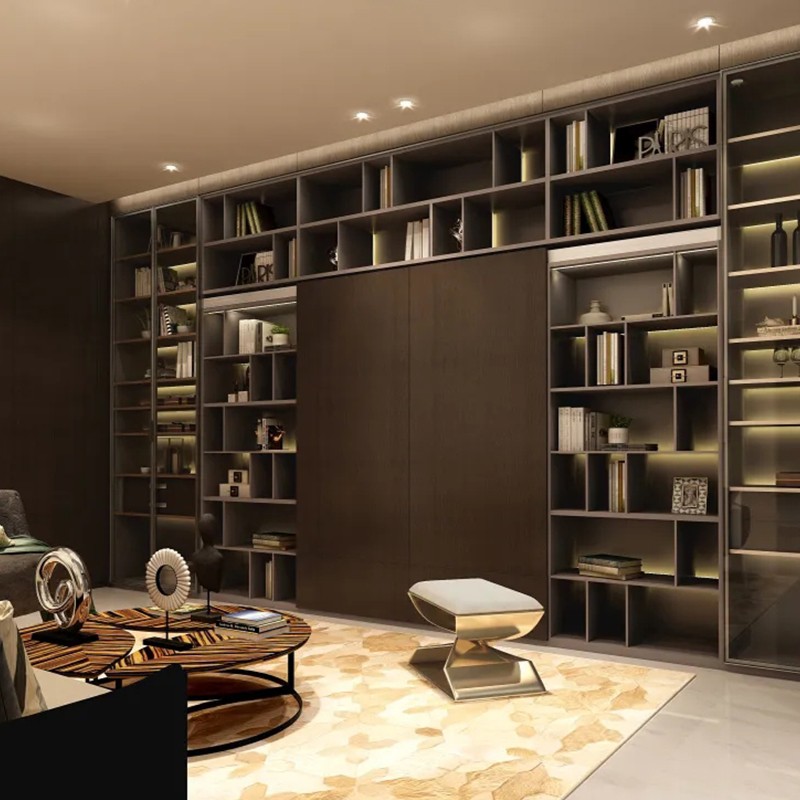
How to correctly install and fix the bookcase?
When installing a bookcase, in addition to choosing a suitable fixing method, you also need to pay attention to the steps and details of the installation to ensure the safety and beauty of the bookcase. Here are some practical installation and fixing suggestions.
1. Preparation
Before you start installing a bookcase, you first need to do sufficient preparation. This includes measuring the size of the room, choosing a suitable installation location, and preparing the necessary tools and materials.
● Measure the size: Measure the height, width, and depth of the room to ensure that the size of the bookcase matches the room. If the room is small, it is recommended to choose a more compact bookcase to avoid taking up too much space.
● Choose a location: Choose a suitable installation location. It is usually recommended to place the bookcase on one side or in a corner of the room to maximize the use of space. At the same time, you also need to consider whether the location of the bookcase will affect the convenience of daily activities, such as whether it will block windows, doors, or passages.
● Prepare tools: Installing a bookcase usually requires some basic tools, such as screwdrivers, electric drills, levels, tape measures, etc. If you need to fix the bookcase to the wall, you may also need L-brackets, corner brackets, or special anti-tipping devices.
2. Installation steps
Once the preparation work is completed, you can start installing the bookcase. Here is an overview of common installation steps:
● Assemble the bookcase: If you choose a modular bookcase, you first need to assemble it according to the steps in the instruction manual. Make sure all components are firmly installed and the screws and connectors fit tightly.
● Adjust the position: Place the bookcase in the predetermined position and use a level to check whether the bookcase is placed smoothly. If the floor is uneven, you can adjust the balance of the bookcase by adjusting the foot pads of the bookcase or placing gaskets at the bottom.
● Fix the bookcase: Choose the appropriate fixing method according to the type and location of the bookcase. For taller bookcases, it is recommended to use L-shaped brackets or angle brackets to fix them to the wall to prevent tipping. If the wall is soft or the bookcase is heavy, expansion screws or special wall fixings are also required.
● Check stability: After installation, shake the bookcase gently to check its stability. If you find looseness or shaking, adjust and reinforce it in time.
3. Safety tips
When installing and fixing the bookcase, you also need to pay attention to some safety tips to ensure that the whole process goes smoothly:
● Pay attention to wires and pipes: Before drilling holes in the wall, be sure to confirm whether there are wires or water pipes in the wall. If you are not sure, you can use a detector or ask a professional to help confirm to avoid accidents.
● Be careful with heavy objects: When installing and moving bookcases, be careful not to let heavy objects hit yourself or others. You can use lifting tools or ask others for help to avoid handling heavy bookcases alone.
● Keep ventilation: If glue or other chemicals are used during installation, be sure to keep the room ventilated to avoid inhaling harmful gases.
Gagaluna: Expert Manufacturer of Custom Cabinets in China
Located in Foshan, China, Gagaluna specializes in custom cabinetry and home furniture solutions. With 18 years of manufacturing expertise, we offer wardrobes, bookcases, and wall panels crafted from premium materials such as acrylic and stainless steel. Wholesale buyers benefit from affordable prices, tailored quotes, and exclusive discounts. Whether you’re designing a modern kitchen or a luxurious interior, Gagaluna provides the perfect solutions.

